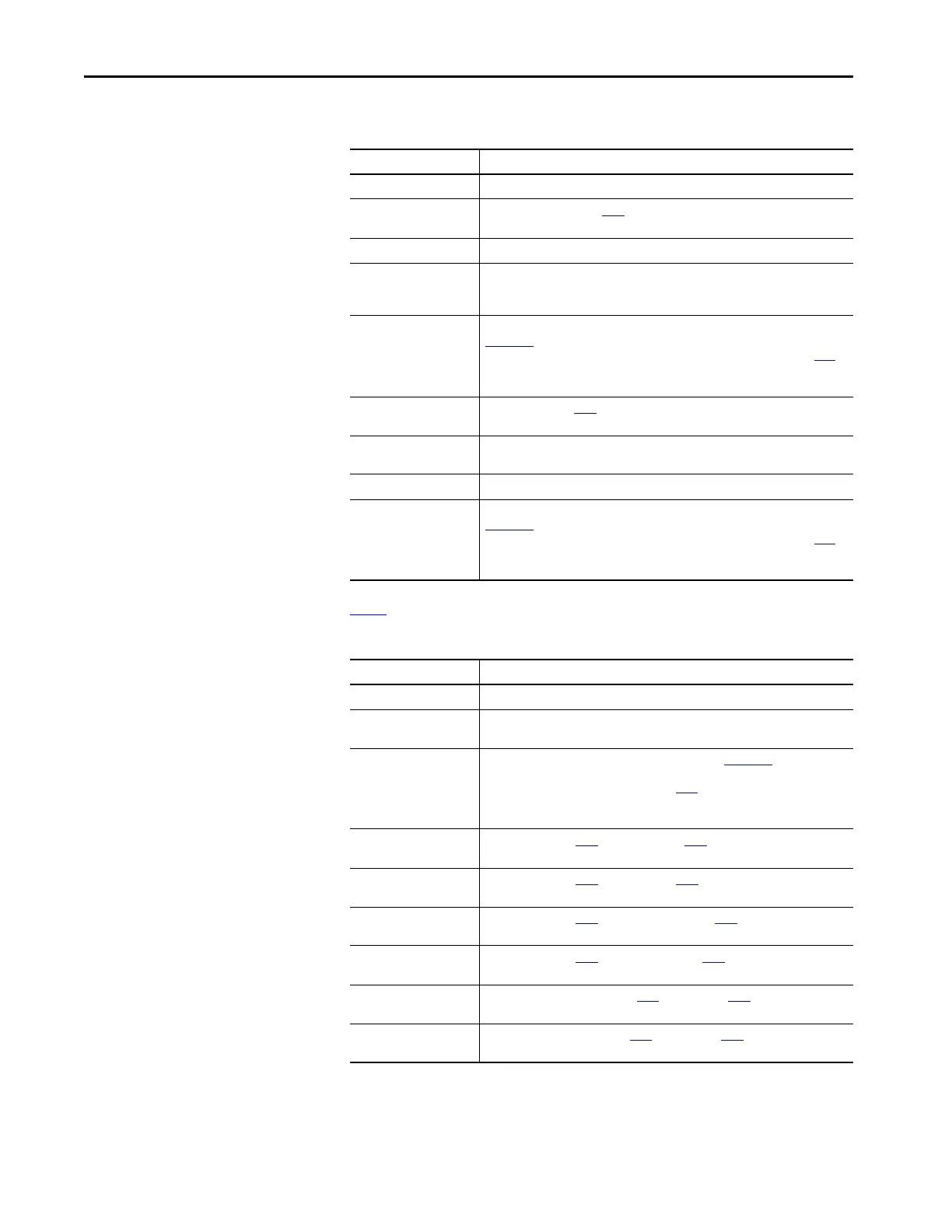160 Rockwell Automation Publication 22C-UM001J-EN-E - January 2017
Appendix D Application Notes
A153 [PID Feedback Sel] is used to select the source of the PID feedback.
Table 32 - A152 [PID Ref Sel] Options
Option Description
0 “PID Disabled” Disables the PID loop (default setting)
1 “PID Setpoint“ Selects Exclusive Control. <A157> [PID Setpoint] will be used to set the value of the
PID Reference.
2 “Analog In 1” Selects Exclusive Control. Selects the Analog In 1 Input.
3 “Analog In 2” Selects Exclusive Control. Selects the Analog In 2 Input. Note that the PID will not
function with a bipolar analog input. It will ignore any negative voltages and treat
them like a zero.
4 “Comm Port” Selects Exclusive Control. The reference word from a communication network (see
Appendix C
for details on the reference word) such as Modbus RTU or DeviceNet
becomes the PID Reference. The value sent over the network is scaled so that P035
[Maximum Freq] x 10 = 100% reference. For example, with [Maximum Freq] = 60
Hz, a value of 600 sent over the network would represent 100% reference.
5 “Setpnt, Trim” Selects Trim Control. A157 [PID Setpoint] will be used to set the value of the PID
Reference.
6 “0-10V, Trim” Selects Trim Control. Selects the 0-10V Input. Note that the PID will not function with
a bipolar analog input. It will ignore any negative voltages and treat them like a zero.
7 “4-20mA, Trim” Selects Trim Control. Selects the 4-20mA Input.
8 “Comm, Trim” Selects Trim Control. The reference word from a communication network (see
Appendix C
for details on the reference word) such as Modbus RTU or DeviceNet
becomes the PID Reference. The value sent over the network is scaled so that P035
[Maximum Freq] x 10 = 100% reference. For example, with [Maximum Freq] = 60
Hz, a value of 600 sent over the network would represent 100% reference.
Table 33 - A153 [PID Feedback Sel] Options
Option Description
0 “Analog In 1” Selects the Analog In 1 Input (default setting).
1 “Analog In 2“ Selects the Analog In 2 Input. Note that the PID will not function with a bipolar
analog input. It will ignore any negative voltages and treat them like a zero.
2 “Comm Port” The reference word from a communication network (see Appendix E
for details on the
reference word) such as Modbus RTU or DeviceNet becomes the PID Feedback. The
value sent over the network is scaled so that P035
[Maximum Freq] x 10 = 100%
Feedback. For example, with [Maximum Freq] = 60 Hz, a value of 600 sent over the
network would represent 100% Feedback.
3 “ACT1 - ACT2” Selects actual inputs A204
[ACT1 Input] minus A205 [ACT2 Input] to be used as the
feedback signal.
4 “ACT1 + ACT2” Selects actual inputs A204
[ACT1 Input] plus A205 [ACT2 Input] to be used as the
feedback signal.
5 “ACT1 * ACT2” Selects actual inputs A204
[ACT1 Input] multiplied by A205 [ACT2 Input] to be used
as the feedback signal.
6 “ACT1 / ACT2” Selects actual inputs A204
[ACT1 Input] divided by A205 [ACT2 Input] to be used as
the feedback signal.
7 “Min A1, A2” Selects the smaller of actual inputs A204 [ACT1 Input] or A205 [ACT2 Input] to be
used as the feedback signal.
8 “Max A1, A2” Selects the larger of actual inputs A204
[ACT1 Input] or A205 [ACT2 Input] to be used
as the feedback signal.

